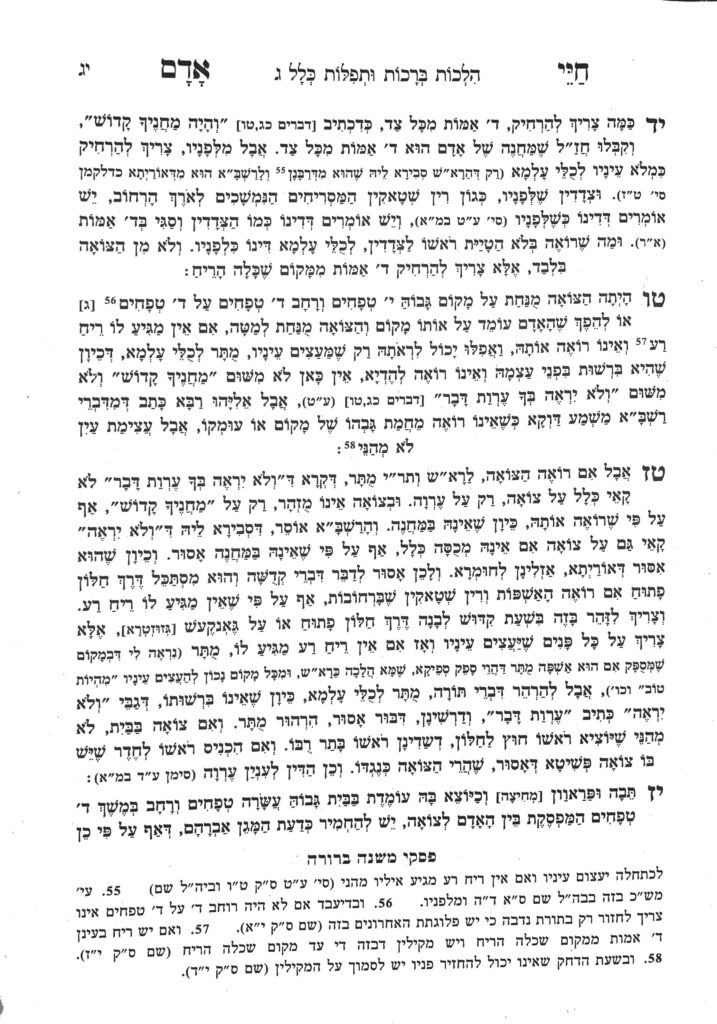We are beginning siman 14. The Chayei Adam will discuss many points which we have already touched on.
The Chayei Adam writes that one must distance themselves four amos away from wherever the tzoah is found. He explains that the pasuk says vehaya machanecha kadosh, and Chazal understood that a person’s machaneh is considered the four amos surrounding them, because it is the general amount of space a person occupies. If there is tzoah within those four amos, it is as though there is tzoah in their machaneh, and it is problematic. In addition, Chazal added a chumra that if the tzoah is in front of a person, they must distance themselves to the point that the tzoah is out of their eyesight.
The Chayei Adam will clarify later whether this last point, regarding tzoah in front of a person, is a din deoraysa or derabanan. He will also clarify that if the tzoah is in a clearly distinct and different reshus, it will not apply. For example, if one is on the road and there is tzoah further down the road, it is a problem. However, if one is on the road and can see tzoah in the house, it may not be assur at all, depending on the machlokes Rosh and Rashba we discussed previously (shiur 1511).
The Chayei Adam writes that the sewage canals/gutters, which are in the reshus harabbim but on the side, are a machlokes. If they are considered to be on one’s side, one only needs to distance themselves four amos. If they are considered to be in front, one would need to distance themselves until it is out of one’s eyesight.
The Chayei Adam now clarifies the definition of “in front” and “to the side” as it applies to these halachos. He writes that anything one sees in their range of vision by looking straight ahead is considered in front of a person according to all. If one has to turn their head to see it, it is a machlokes whether it is considered in front or to the side. The Chayei Adam brings both opinions, and does not give a final psak. However, he does add that if there is tzoah to the side which is easily visible, it is considered in front.
The Chayei Adam writes that not only must one distance from the tzoah, but from the smell of the tzoah as well, as we have learned previously (shiur 1517).
Summary
- Not cannot speak or think torah or tefillah in the presence of tzoah.
- The presence of tzoah is considered the four amos to the sides and behind a person, and as far as one’s eyesight in front of them.
- If the tzoah smells, one must distance themselves until they no longer smell it, and then add four amos.



